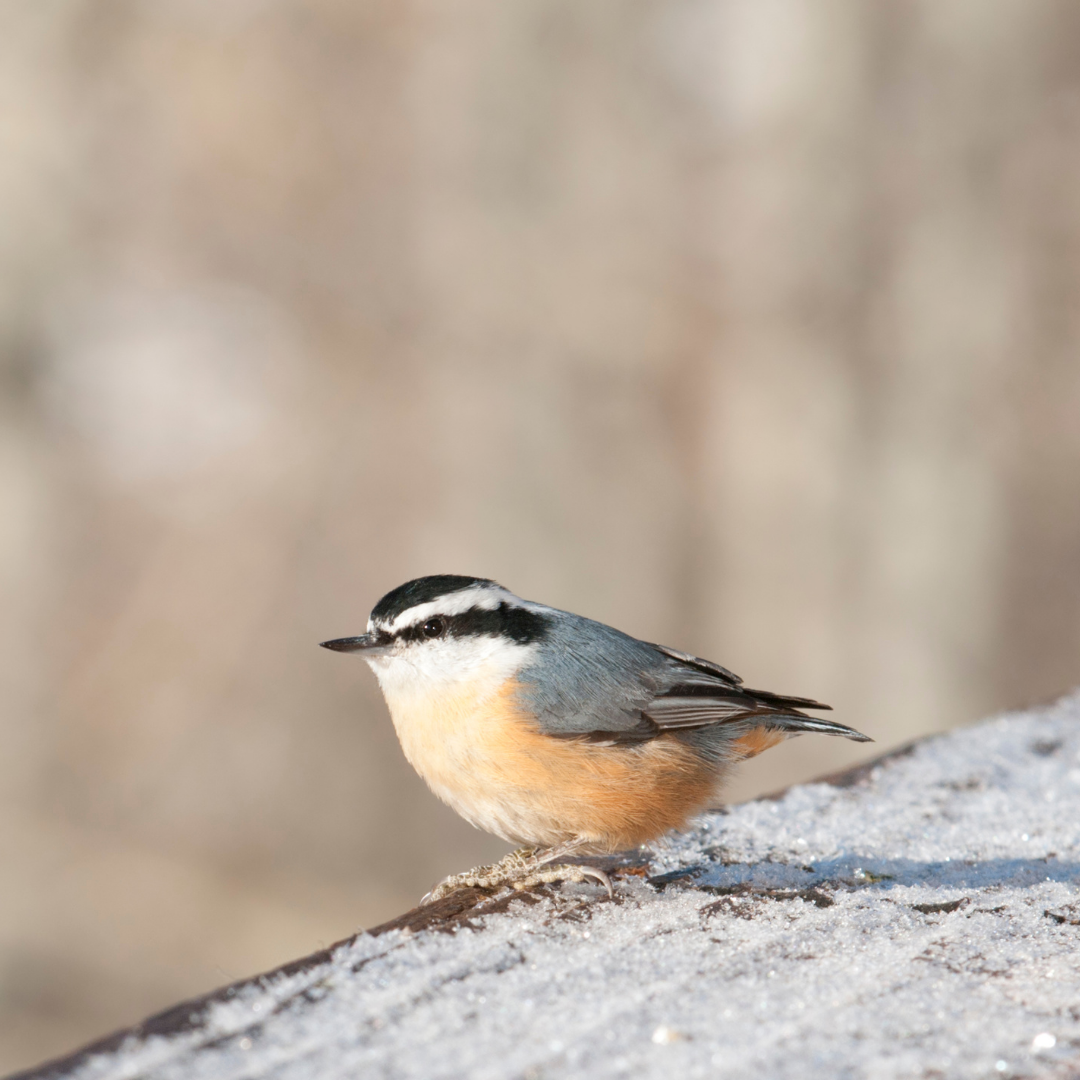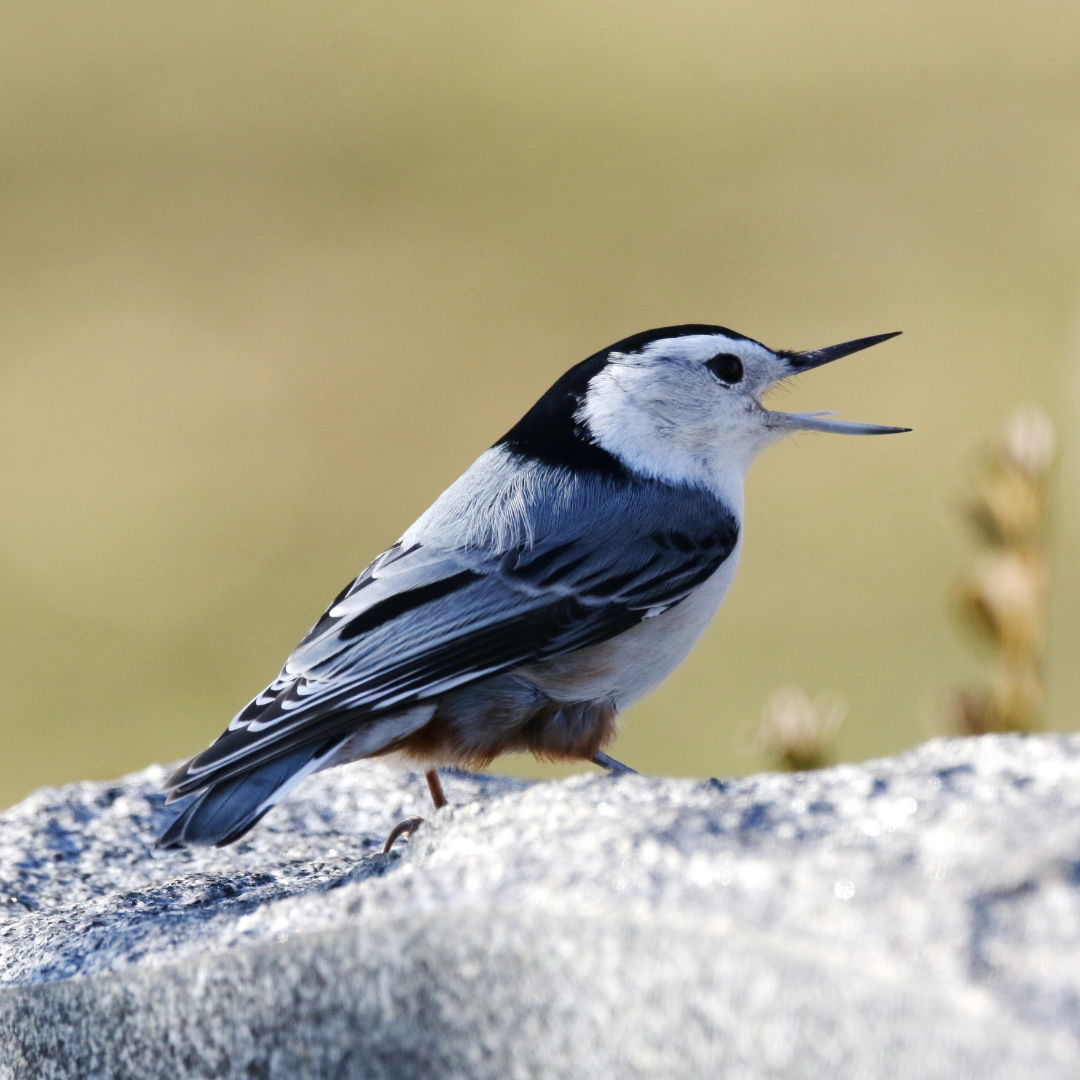This winter, venture outdoors and observe the vibrant wildlife surrounding you. Which avian species might you spot? Explore our guide to several of Greene County’s common winter bird residents.
Don’t miss out on the Great Backyard Bird Count the third weekend in February! Over four days, people around the world come together to spend time in their favorite places watching and counting as many birds as they can find and submitting their reports.
Winter Birds of Greene County

Northern Cardinal
With its striking red feathers, the Northern Cardinal is a favored guest at backyard bird feeders in all seasons. Males are a bright red with a black masked face and females are a light brown color with reddish highlights and dark coloration around their eyes and beak. Cardinals are songbirds, and the females sing more complex songs than the males.

Pileated Woodpecker
The Pileated Woodpecker is one of largest, most recognizable birds in North America. Look and listen for them whacking at dead trees and fallen logs in search of their main prey, carpenter ants, leaving unique rectangular holes in the wood.

Red-bellied Woodpecker
Red-bellied Woodpeckers are pale, medium-sized woodpeckers common in forests of the East. Their gleaming red caps make them an unforgettable sight. If you live near any wooded patches, you may be able to attract them using feeders filled with suet in the winter, peanuts, and sometimes sunflower seeds.

Red-breasted Nuthatches
Red-breasted Nuthatches are tiny, active birds of north woods and western mountains. They will bring an intense bundle of energy to any feeder. These tiny songbirds produce sounds packed with a punch. Listen for their excited yank-yank like tin horns being sounded from the treetops.

The House Finch
The House Finch is a recent introduction from western into eastern North America, bringing with it a long, twittering song, which can now be heard in most of the neighborhoods of the continent. Spot them feeding in flocks or look for the cheerful red head of the males.

Blue Jay
This common, large songbird is familiar to many people, with its perky crest, blue, white, and black feathers, and noisy calls. But there’s more than what meets the eye. Blue Jays are known for their intelligence, complex social systems, and tight family bonds. They love acorns, and will often visit a feeder or take a drink from a bird bath.

White-breasted Nuthatches
White-breasted Nuthatches are active, agile little birds with an appetite for insects and large, meaty seeds. They get their common name from their habit of jamming large nuts and acorns into tree bark, then whacking them with their sharp bill to “hatch” out the seed from the inside. Look for their white underside, black, sleek back, and long, sharp beaks. They may be small, but their voices are loud, and often their nasally calls will lead you right to them.

American Goldfinch
This handsome little finch, is welcome and common at feeders, where it primarily enjoys snacking on sunflower and nyjer. Spring males are brilliant yellow and shiny black with a bit of white. Females and all winter birds are more dull but identifiable by their conical bill, pointed, notched tail, and lack of streaking. American Goldfinches are unique among goldfinches in that they molt their body feathers twice a year. They may appear bizarrely patchy during the later months of winter and summer.
Photos and descriptions on behalf of The Cornell Lab’s Bird Guide and The Ralph K. Bell Bird Club of Greene County.







